Test: Das Giant Trance Advanced Pro 29 überraschte im Test trotz wenig Federweg mit toller Performance auf dem Trail. Angesichts der guten Ausstattung ist das Rad für unter 5.000 Euro auch preislich äußerst attraktiv.
Giant Trance Advanced Pro 29: Rahmen und Geometrie
Das Giant Trance gehört – neben dem Stumpy und den Genius von Scott – zu den dienstältesten Trail-Allroundern dort draußen, die es auch im Jahr 2019 noch immer zu kaufen gibt. Wenngleich das aktuelle Trance mit den Modellen von einst nicht mehr allzu viel gemein hat, sind zwei Grundzutaten auch 15 Jahre später noch gleich: Die universelle Ausrichtung für alles, was Wald, Berge und Flachland so hergeben und der Maestro Hinterbau. Das Giant Trance Advanced Pro 29 kommt in der Saison 2019 mit 115mm Federweg am Heck, denen 130mm vorn entgegengesetzt werden. Auf den ersten Blick recht wenig für einen Allrounder, doch – so viel vorweg – das Trance zeigt, dass es nicht auf die Menge des Federwegs, sondern auf dessen Qualität ankommt.
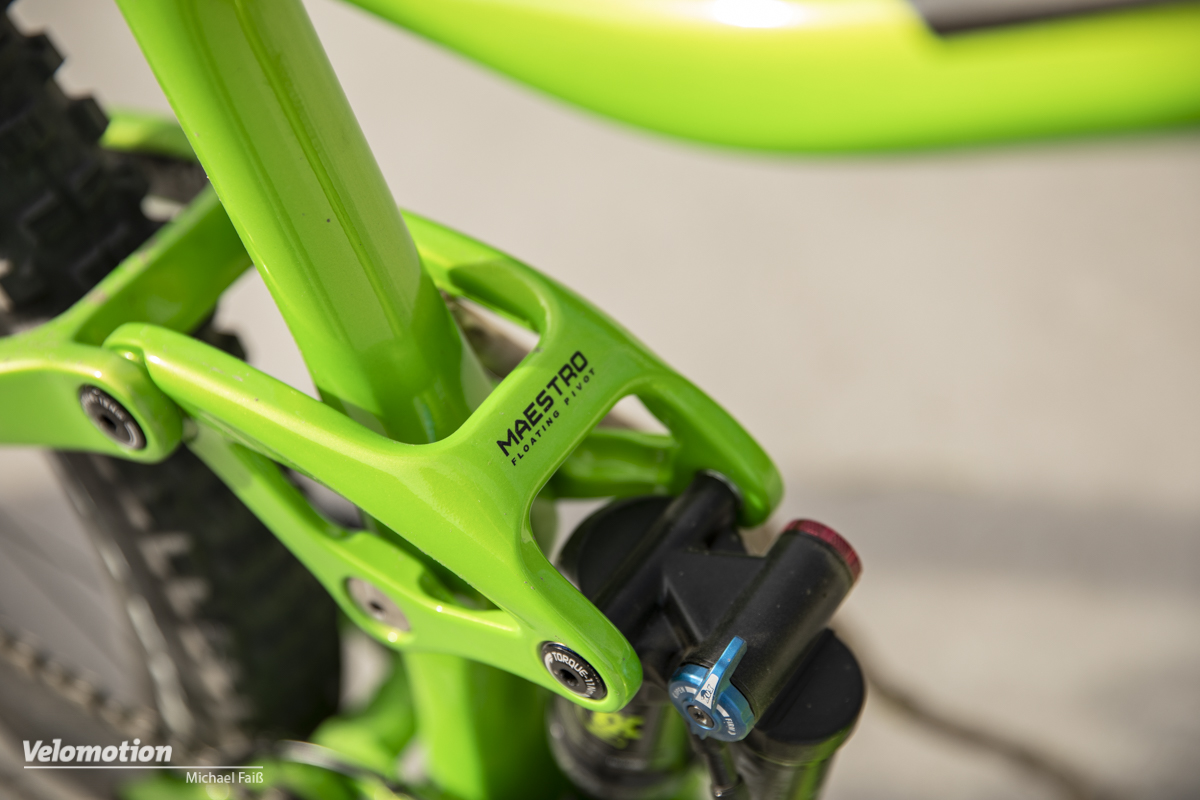
Das Trance kommt in dieser Saison sowohl mit Alu, wie mit Carbonrahmen und macht Freunde von 29ern ebenso glücklich wie die Anhänger von 650b. Neu hinzugekommen ist zudem mit den Trance Jr. ein kleines Modell speziell für Jugendliche. Im Test hatten wir mit dem Trance Advanced Pro 29 die Top-Variante der 29er, selbstverständlich mit Rahmen aus Carbon und einer hochwertigen, durchdachten Ausstattung, bei der jedoch mehr Wert auf Praktikabilität denn auf „Bling Bling“ gelegt wurde – so erklärt sich auch der verhältnismäßig günstige Preis: 4.799 Euro sind für ein MTB-Topmodell mit Carbonrahmen in diesen Tagen fast schon ein Schnäppchen.
Der Maestro Hinterbau von Giant steht wie ein Fels in der Brandung der schnelllebigen MTB-Welt und ist natürlich auch am neuen Trance wieder mit von der Partie. Kein Wunder: Die Eigeninterpretation des VPP-Systems hat sich bewährt und funktioniert schlicht sehr gut. Schon seit mehreren Saison setzt Giant zudem auf Dämpfer mit Trunnion Mount, die trotz kompakter Maße viel Hub unterbringen. Der Vorteil für den Fahrer: Dank niedrigem Übersetzungsverhältnis kann der Hinterbau fein abgestimmt werden und auch schwere Fahrer bleiben weit vom Maximaldruck entfernt.
Bei der Geometrie des 2019er Trance zeigt Giant Feingefühl für derzeitige Markttrends, ohne jedoch das zu vergessen, was das Rad in der Vergangenheit so beliebt gemacht hat. Zwar fällt auch beim Trail-Evergreen der Hauptrahmen mittlerweile recht lang aus, kurze Kettenstreben und der gemäßigt flache Lenkwinkel halten den Radstand jedoch erfreulich gering, um dem Rad seine Wendigkeit nicht zu nehmen.
Geometrie Giant Trance Advanced 29
| S | M | L | XL | |
| Sitzrohr (in mm) | 380 | 431 | 482 | 507 |
| Oberrohr horizontal (in mm) | 592 | 612 | 632 | 652 |
| Steuerrohr (in mm) | 95 | 110 | 110 | 120 |
| Kettenstrebe (in mm) | 435 | 435 | 435 | 435 |
| Radstand (in mm) | 1154 | 1176 | 1197 | 1218 |
| Lenkwinkel (in °) | 66.5 | 66.5 | 66.5 | 66.5 |
| Sitzwinkel (in °) | 74.5 | 74.5 | 74.5 | 74.5 |
| Reach (in mm) | 426 | 442 | 462 | 480 |
| Stack (in mm) | 599 | 613 | 613 | 622 |
Giant Trance Advanced Pro 29: Ausstattung

Wie bereits angesprochen kostet das Giant Trance Advanced Pro 29 wie wir es getestet haben 4.799 Euro. Das ist einerseits eine Menge Geld für ein Fahrrad, doch bei genauerer Betrachtung zeigt sich, dass der Fahrradriese aus Taiwan hier ein überaus attraktives Gesamtpaket schnüren konnte. Das Fox Fahrwerk bestehend aus der 34er Gabel vorn und dem DPX2 Dämpfer im Heck kommt als Performance Variante – gegenüber der Factory-Ausführung muss man zwar mit der etwas einfacheren Grip-Dämpfung auskommen, die jedoch für die allermeisten Einsatzgebiete und Fahrer vollkommen ausreicht – weiterer Vorteil: Durch die etwas eingeschränkten Einstellmöglichkeiten bei Druck- und Zugstufe ist das passende Setup auch für Einsteiger schnell zu finden. Dass man vorn auf die etwas leichtere 34er Gabel setzt und nicht auf die 36er wie einige andere Bikes im Testfeld ist angesichts des Federwegs von 130mm nur logisch und die etwas geringere Steifigkeit dürfte nur wenigen wirklich auffallen.
| Rahmen | Trance Advanced Pro Carbon |
| Federgabel | Fox Float 34 Performance |
| Dämpfer | Fox DPX2 Performance |
| Laufräder | Giant TRX 1 Carbon |
| Reifen VR | Maxxis Minion DHF |
| Reifen HR | Maxxis Minion DHR II |
| Schaltwerk | Sram GX Eagle |
| Schalthebel | Sram GX Eagle |
| Kurbel | Truvativ Descendant 6k Eagle |
| Umwerfer | Ohne |
| Bremse | Sram Guide T |
| Bremsscheiben | Sram Centerline 180mm |
| Sattelstütze | Giant Conntact Switch S |
| Sattel | Giant Conctact SL Neutral |
| Vorbau | Giant Conctact SL |
| Lenker | Giant Contact SL Riser 780mm |
Mit dem Sram GX Eagle Antrieb wechselt am Trance der derzeit vielleicht beliebteste Antrieb im MTB-Sektor die Gänge. 500% Bandbreite, zuverlässige Performance, attraktiver Preis – hier gibt’s wirklich nur wenig auszusetzen. Leichtbaufans würden sich vielleicht das eine oder andere Gramm weniger wünschen; andererseits: Mit 12,5kg ist das Giant eines der leichtesten Räder in unserem Testfeld.
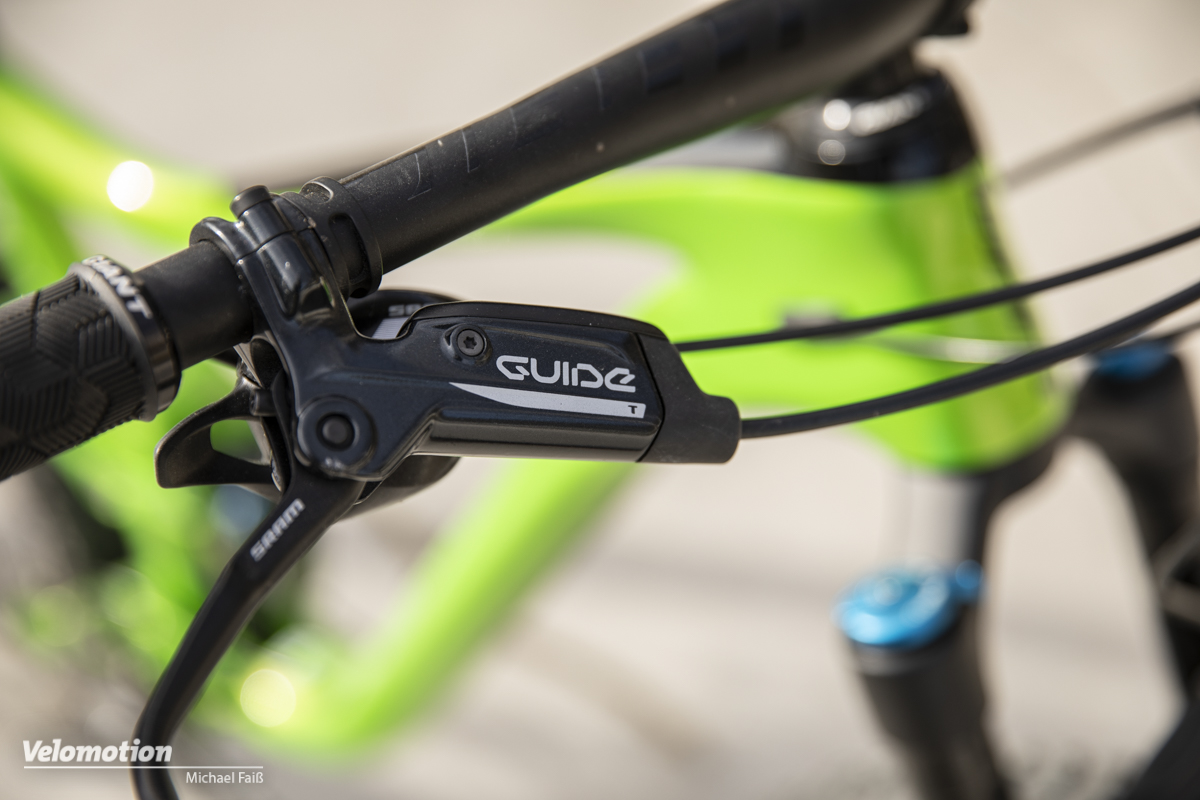
Bei Cockpit, Laufrädern und Sattel und Stütze kommen hauseigene Teile von Giant zum Einsatz. Das ist jedoch keinesfalls als Kritik zu verstehen, denn die Anbauteile sind von hervorragender Qualität und müssen sich keinesfalls vor der Konkurrenz verstecken. Die Contact Switch Variostütze hat inzwischen auch einen ergonomisch gelungenen Hebel bekommen und liefert damit eine tolle Performance ab. Die Laufräder sind mit 26mm breiten Carbonfelgen ausgestattet, sind leicht und boten uns keinerlei Grund zur Kritik. Selbiges gilt für die überraschend potent ausfallenden Reifen: Die Maxxis Kombination aus DHF an der Front und DHRII am Heck würde so auch gut an ein Enduro passen. So muss man zwar ein paar Abstriche beim Rollwiderstand machen, dafür kann man es damit auch auf dem Trail so richtig krachen lassen.
Giant Trance Advanced Pro 29: Auf dem Trail
Mit 115mm Federweg am Heck erwartet man vielleicht bergauf Marathon-Fully Feeling. Leider dürften solch hohe Erwartungen an das Uphill-Verhalten des Trance etwas enttäuscht werden. Trotzdem ist das Trance einer der schnellen Kletterer im Testfeld. Das liegt an dem recht niedrigen Gewicht und der guten Geometrie. Das Vorderrad bleibt am Boden, man kann sich aufs Pedalieren konzentrieren. Ein 30er Kettenblatt mit 12-Gang Eagle Kasette bietet auf alle Fälle ausreichend Bandbreite. Dass der Hinterbau auch im blockierten Modus bzw. Uphill Modus noch immer etwas wippt fällt nicht so sehr ins Gewicht.
Auch in der Abfahrt wird klar, dass eine Kategorisierung nach Federweg beim Trance wenig Sinn macht. Für den knappen Hub am Heck kann man das Gas ordentlich stehen lassen. Nicht nur weil der Hinterbau sehr schluckfreudig geraten ist, sondern auch die Geometrie ermutigt den Piloten. Kurze Kettenstreben, eine eher lange Front, ein nicht zu steiler Lenkwinkel, das sind alles Zutaten für ein gelungenes Rezept. Das Fahrwerk gefällt uns, wie erwähnt, natürlich hat die Fox 34 an der Front weniger Reserven als sie eine 36 hätte, aber insgesamt bekommt man eine richtig gute Performance für den knappen Federweg. Nur die Bremse könnte ein wenig mehr Power haben und vor allem etwas mehr Reserven. Mehrere Tester wollen unabhängig voneinander Fading festgestellt haben. Da freut man sich besonders, dass die Maxxis Minion so guten Grip haben, da kann man auch mal etwas zu schnell in die Kurve ohne gleich in Panik zu geraten. Die ausgewogene Geometrie und das Schluckvermögen des Fahrwerks haben uns überrascht und sehr gut gefallen. Wir haben im Trance Advanced Pro 29 unser „grünes Wunder“ erlebt.
Die Ausstattung steht etwas hinter anderen Bikes im Testfeld zurück. Allerdings ist das Preis-Leistungsverhältnis sehr gut, denn für den Preis einiger Mitbewerber kann man sich zwei Trance zulegen. Nicht nur gemessen am Preis sind wir mit den verbauten Parts zufrieden. Alles tut was es soll, alles ist in sich schlüssig. Die Teile der Hausmarke, z.B. Sattel, Teleskopstütze, Griffe und Laufräder funktionieren gut, sehen gut aus und überzeugen uns seit Jahren immer wieder. Die Sram Eagle Gruppe gefällt uns ebenfalls, genau wie die Reifen. Für Enduristi wäre eine massivere Gabel eine gute Sache, aber zu einem tollen Allrounder passt die 34 gut. Vielleicht könnte eine Upgrade oder eine Änderung beim Federbein die Performance bergauf und in der ebene noch verbessern. Für die Bremse wünschen wir uns zumindest große Scheiben.

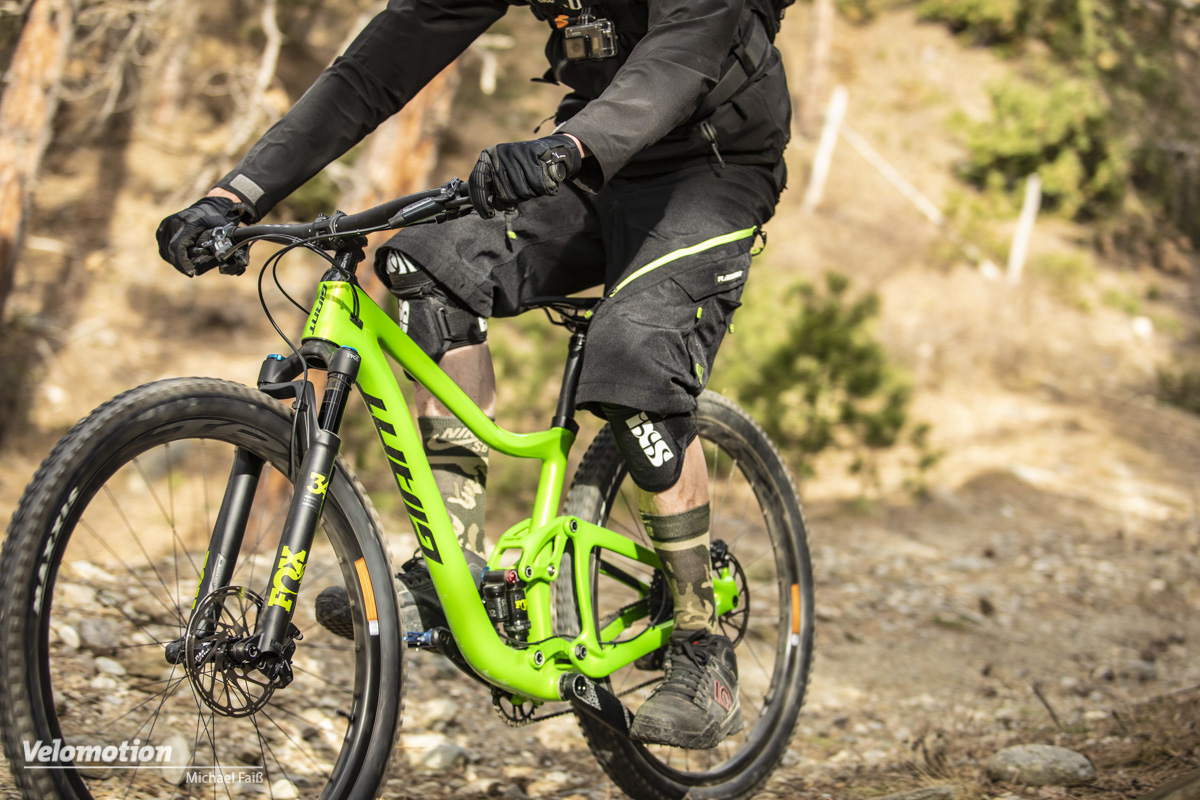
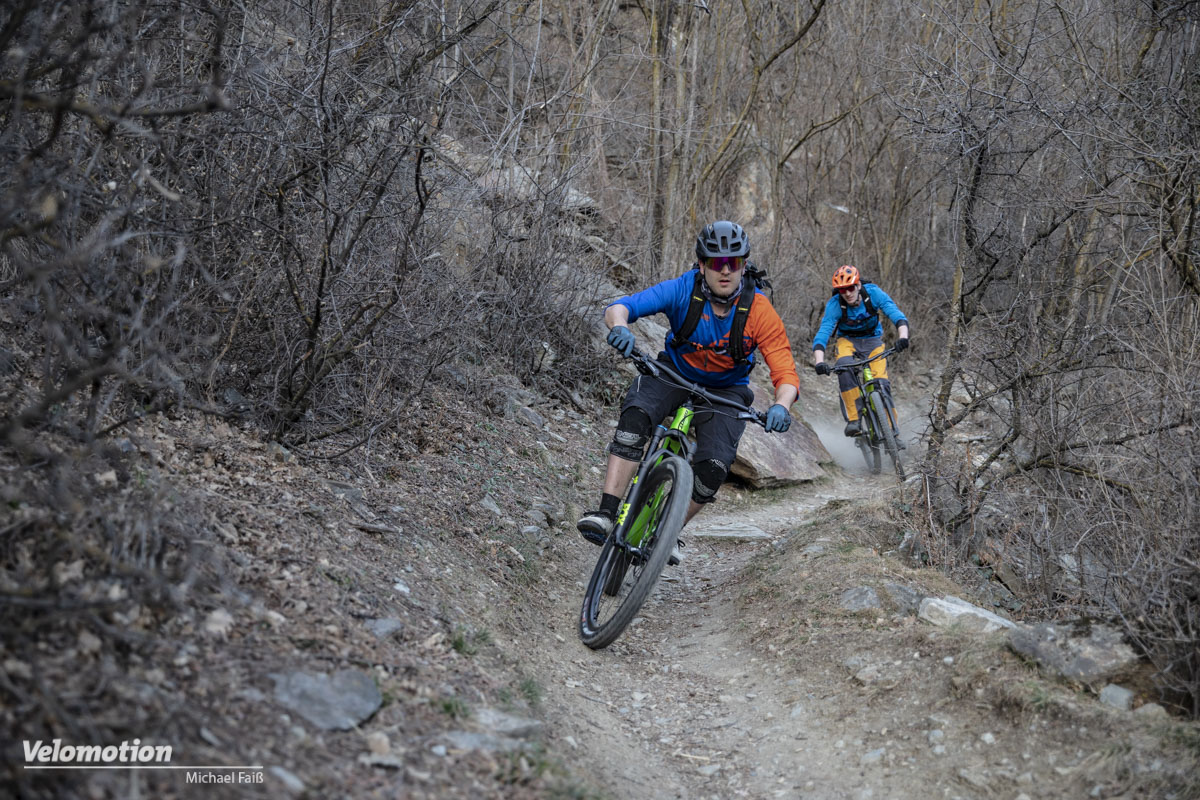
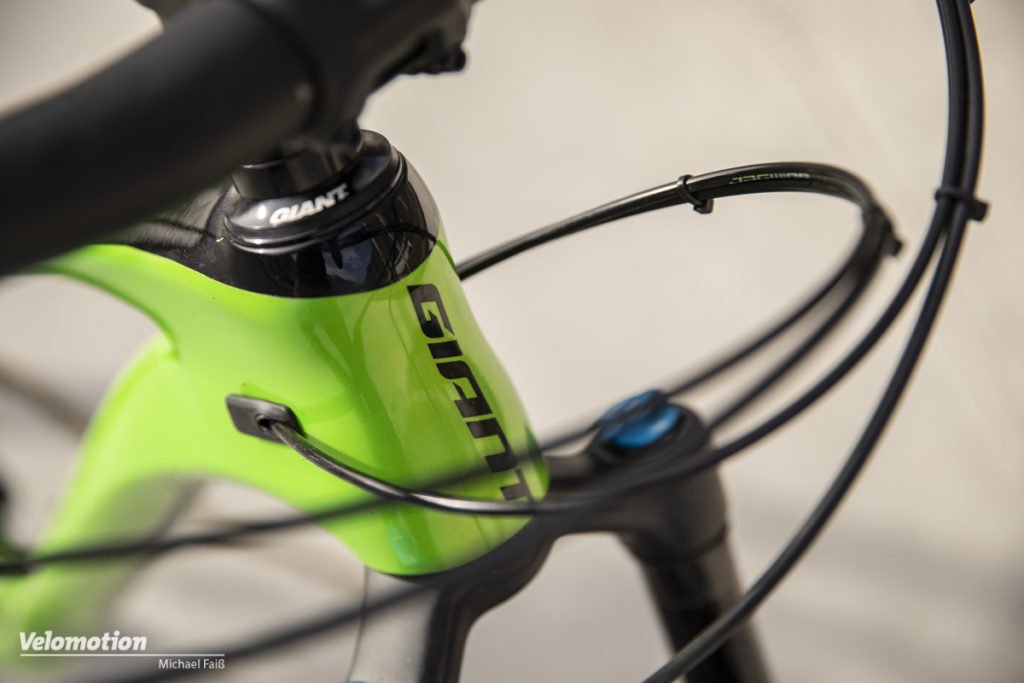



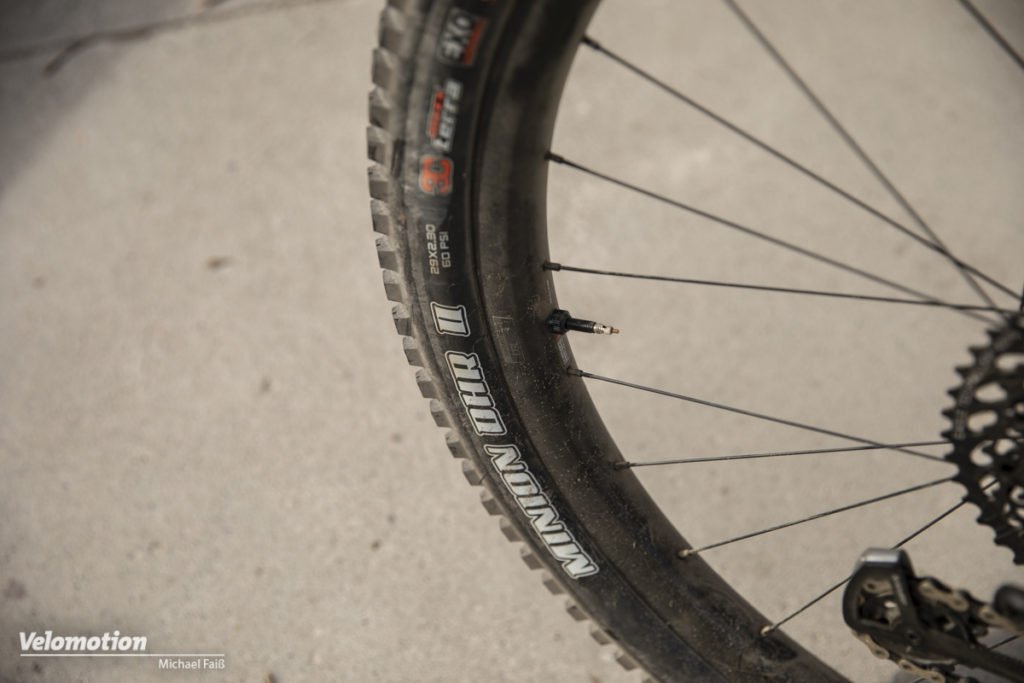
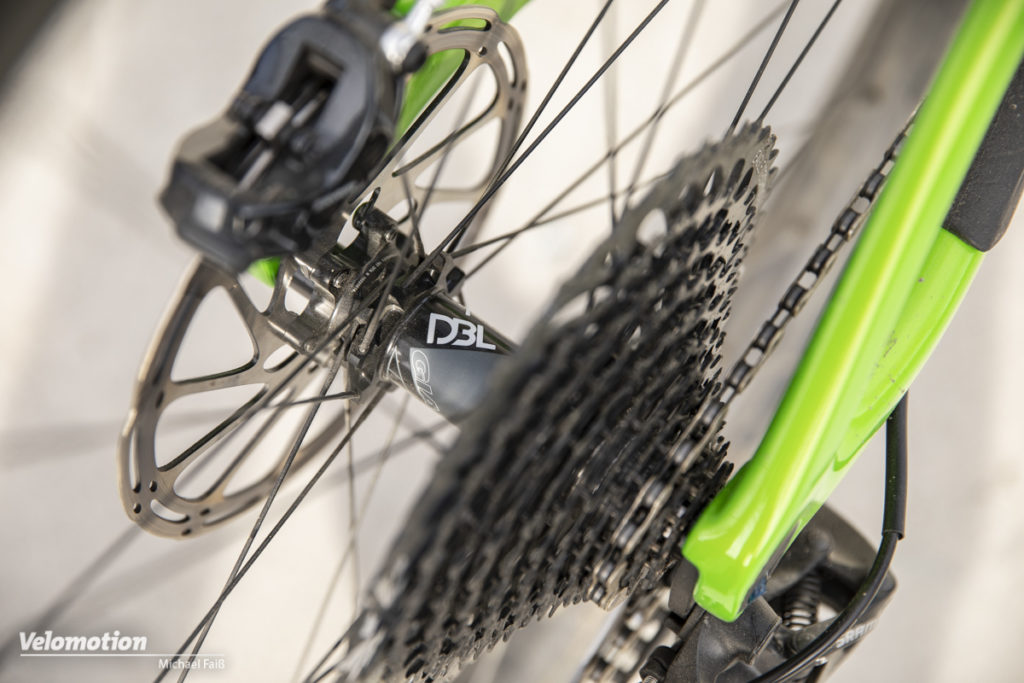
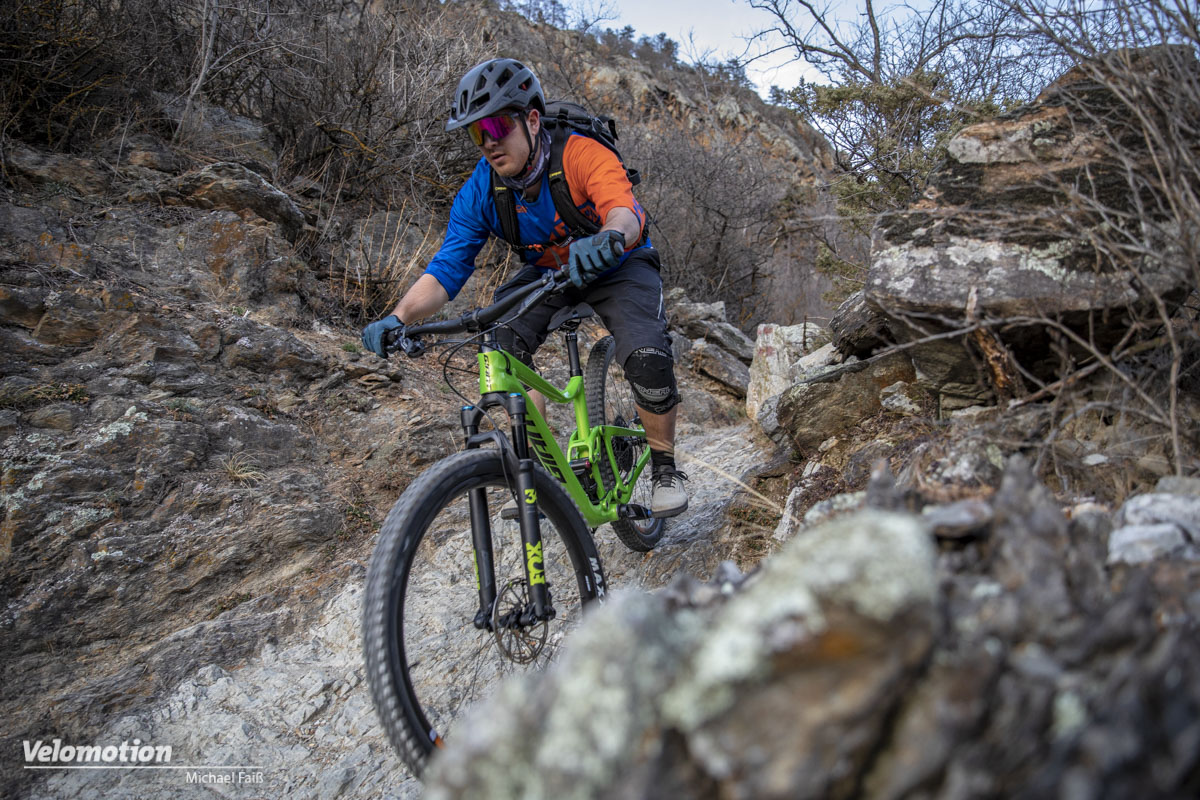
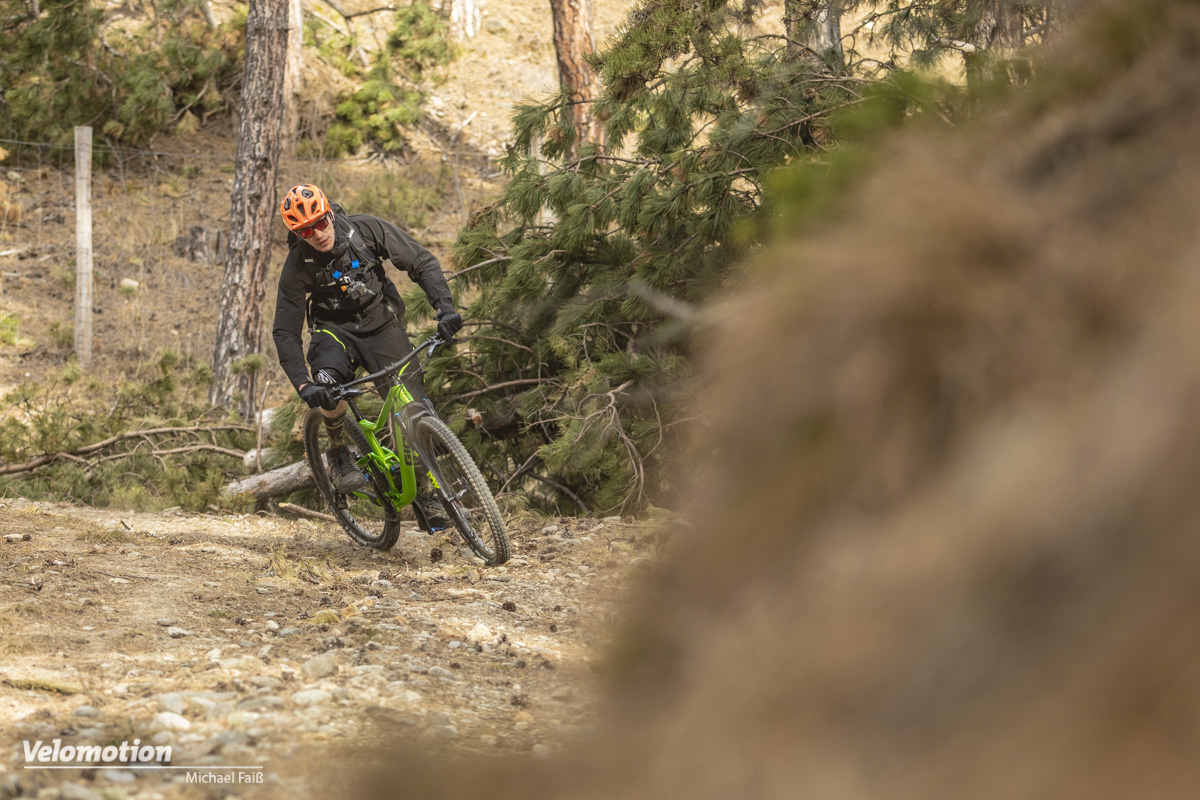
Schreibe einen Kommentar